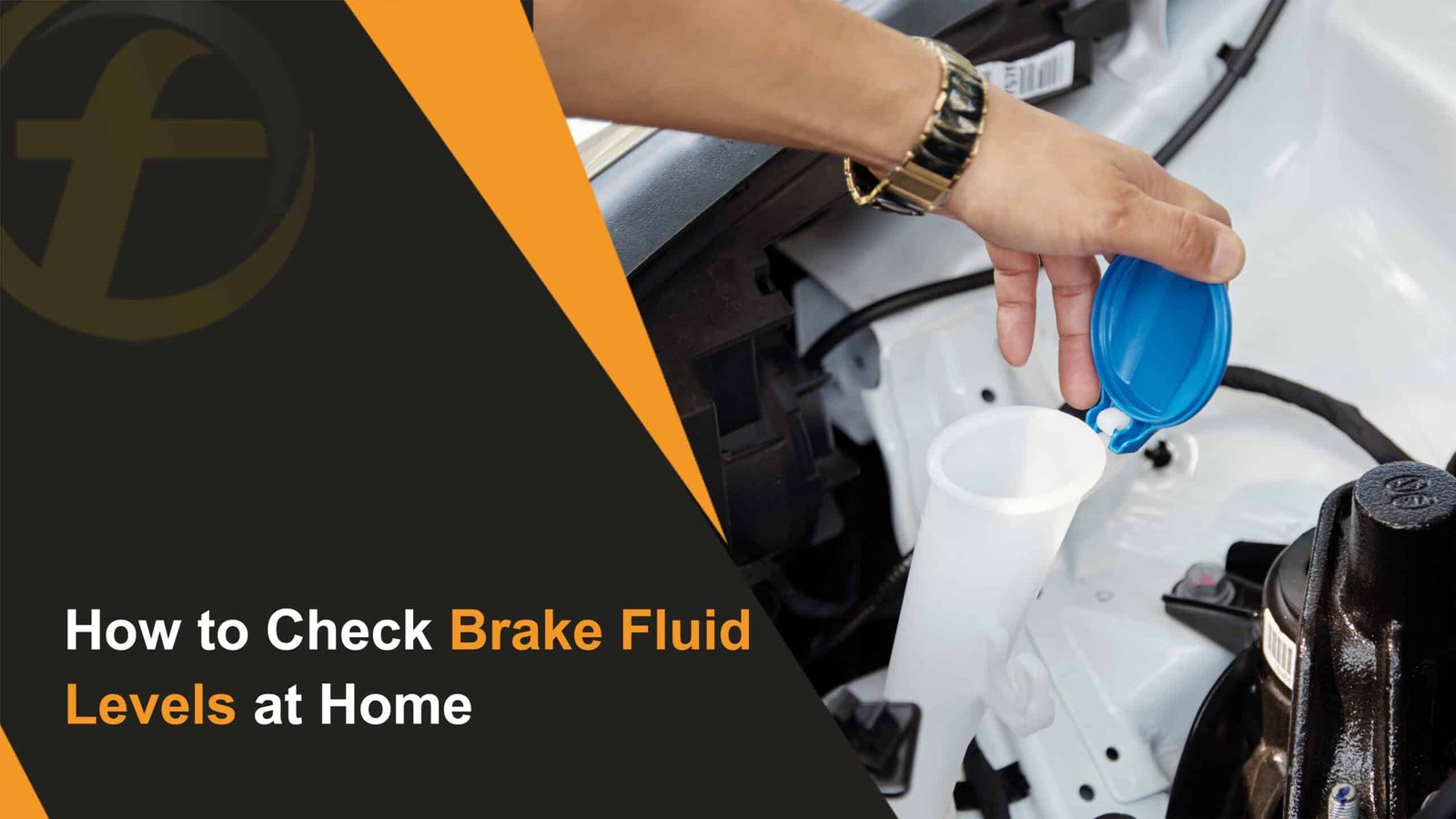
Your car’s brakes are one of the most important safety features on the road, and brake fluid plays a big role in keeping them working properly. Even though it’s a small part of your car, brake fluid makes sure your brake pedal responds correctly, your brakes stay smooth, and your car stops safely when you need it.
At Fubex Lubricants, we offer high-quality brake fluids for all types of engines. Enjoy fast shipping, a price match guarantee, and no-questions-asked returns. Need help choosing the right oil? Call us at +971 50 544 9614 — our friendly team is ready to assist!
Checking and maintaining your brake fluid might seem simple, but it can save you from expensive repairs and keep you safe every time you drive. In this guide, we’ll show you why brake fluid matters, how to check it, and what to look out for—all in easy-to-understand steps.
What is Brake Fluid?
Your car’s brakes work using a system called hydraulic, which means they use a special liquid to make the brakes move. This liquid is called brake fluid.
Brake fluid is very important because it:
- Helps the brake pedal work properly
- Lubricates (keeps parts moving smoothly)
- Protects parts from rust and corrosion
If the brake fluid is low, your brakes might not work well. That’s why it’s so important to check and maintain it regularly.
Before You Start
- Check Your Car Manual: Look in your service or owner’s manual to find the brake fluid reservoir. Its location depends on your car.
- Find the Reservoir: The brake booster is usually on the driver’s side near the firewall. Right in front of it, connected to the master cylinder, is the brake fluid reservoir. Most newer cars have a plastic container. Older cars may have a small metal box with a removable lid.
- Park Safely: Make sure your car is on a flat, stable surface.
- Engine Off: Always check the brake fluid when the engine is cold and switched off.
How to Check Your Brake Fluid – Easy Step-by-Step
Step 1: Find the Brake Fluid Reservoir
Look under the hood of your car for a small container called the brake master cylinder reservoir. It’s usually near the back of the engine, close to where the brake pedal is inside the car. If you can’t find it, check your car’s owner manual.
Step 2: Check the Fluid Level
- Newer Cars: Most newer cars have a see-through reservoir with a “full” line. You can see the level without opening the cap.
- Older Cars: Older cars might have a metal container with a top held by a clamp. Wipe the top clean, then open it to check the fluid. Make sure the fluid reaches the “full” line.
Step 3: Add Brake Fluid if it’s low
- Only use the type of brake fluid your car manual recommends.
- Fill it up to the “full” line, but don’t overfill.
- If the fluid is very low, it could mean your brakes need fixing. Take your car to a professional before driving.
- If your reservoir has two chambers, fill both to the “full” line.
Step 4: Put the Cap Back On
Close the reservoir carefully. You’re done!
Safety tips:
- Brake fluid is very toxic. Wash your hands after touching it.
- Don’t let it get in your eyes or on your car’s paint.
Also Read: Which Fluids Are Safe (and Unsafe) Alternatives to Brake Fluid?
Why, When, and How to Check Brake Fluid
Why Check it?
Checking your brake fluid helps make sure your brakes work properly. Good brakes keep you, your passengers, and everyone on the road safe.
When to Check it?
Most cars need their brake fluid replaced every 2–3 years, as the owner’s manual says. But it’s a good idea to look at the brake fluid every 3–4 months to make sure the level is okay—especially if you live somewhere humid, because moisture can change the fluid.
How to check it? You can either check the brake fluid yourself or have a professional do it for you.
Option 1: How to Check Your Brake Fluid Yourself
Before you start, remember this is just a general guide. Always check your car’s owner manual for details.
Step 1: Find the Brake Fluid Reservoir
Open the hood and look for the brake fluid reservoir on the master cylinder. If you’re not sure where it is, your owner’s manual can help.
Step 2: Check the Fluid Level
Look at the “maximum” and “minimum” lines on the side of the reservoir.
- If the fluid is near or below the “minimum” line, it’s time to have your brakes checked. Don’t wait until your next oil change—get them looked at soon.
Step 3: Look at the Color and Clarity
Fresh brake fluid is usually clear with a little green, blue, yellow, or orange tint. If it looks dark or cloudy, it may be dirty or contaminated.
Step 4: Take Action if Needed
If you notice low or dirty fluid, don’t ignore it. Take your car to a professional so they can check your brakes. Ignoring warning signs can cause brake problems and expensive repairs.
Also Read: Which Brake Fluid is Best for My Car: DOT 3, DOT 4, or DOT 5?
What Color is Brake Fluid?
Fresh brake fluid is usually clear with a little yellow tint. Over time, as you drive, it can pick up dirt and debris, turning it darker. If your brake fluid looks darker than usual, it’s a sign that you should get your brakes checked. Sometimes, the system may need a fluid flush to keep everything working properly.
How Do I Check My Brake Fluid?
- Open the hood and have your owner’s manual handy.
- Find the brake fluid reservoir—it’s usually on the driver’s side of the engine. Check your manual if you’re not sure.
- Look at the fill lines on the side of the reservoir. You’ll see a minimum and maximum line.
- Check the level:
- If the fluid is between the two lines, you’re good!
- If it’s too low, carefully add fluid up to the maximum line, but don’t overfill.
Final Takeaways
Keeping your brake fluid at the right level is a simple but super important step in making sure your car stays safe and reliable. By checking it regularly, noticing the signs of low or dirty fluid, and topping it up when needed, you’re protecting yourself, your passengers, and everyone on the road.
Remember, brakes are one of the most critical parts of your car—taking a little time to care for them now can save you from costly repairs or dangerous situations later. Stay safe, stay smart, and keep your brakes in top shape!
FAQs
Q1: What happens if I don’t top up my car’s brake fluid?
Brake fluid is very important for your brakes to work properly. If the fluid is too low, it can get too hot, boil, and make your brakes weak or slow to respond. This can be dangerous and may cause an accident.
Q2: Is brake fluid really important?
Yes! Brake fluid is very important because it helps your brakes work. When you press the brake pedal, the fluid helps push the brake pads against the discs (or drum shoes). Without brake fluid, your brakes wouldn’t work at all.
Q3: What are the signs that I need more brake fluid?
Your car gives you clues when brake fluid is low. Watch for these signs:
- The brake pedal feels soft or unresponsive
- The brakes vibrate or make strange noises
If you notice any of these, check your brake fluid and top it up if needed. It’s also a good idea to take your car to a professional to make sure your brakes are in good shape.

Editor-at-Large
A passionate writer in the lubricant industry, Awais Iqbal has been covering oils, greases, and industrial fluids since the start of his career. At 25, he’s already written for blogs, catalogs, and brand guides across the UAE. Awais’s insights help companies connect with their audience, and his clear, helpful writing style is trusted by brands in the region.


